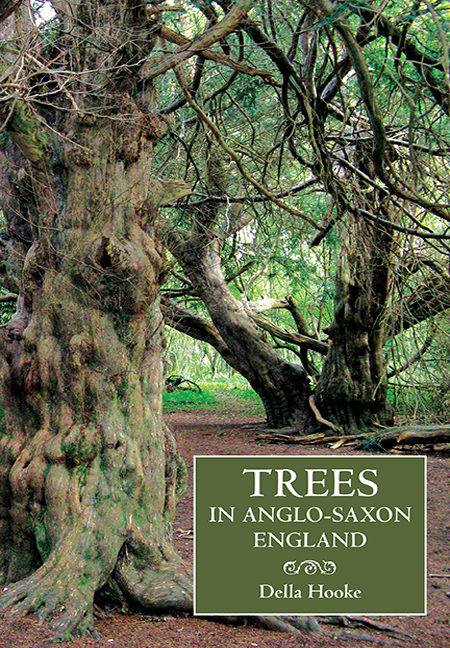Epilogue
Published online by Cambridge University Press: 09 May 2017
Summary
The trees of early medieval England offer us glimpses of a lost landscape. But our familiarity with their modern counterparts allows us to reconstruct these landscapes in our mind's eye. We can understand our ancestors’ interest in trees as a valuable resource and something of the awe imposed by a great wood, often remote from the world of their everyday existence. They, too, cannot have been immune to the beauty of individual trees. The different species then bore, for the most part, the same names by which we know them today and each species, had, or was believed to have, its own special attributes.
In the above pages the role of these trees has been explored, especially as boundary markers or features that gave rise to local place-names. Attempts have been made to explain why particular species of trees became docmented in this way. The distribution of species can, however, reveal other aspects of the early medieval countryside, especially the regional variation which lends so much richness to the landscape of Britain. Through charters and place-names one is able to envisage the moorland landscapes of the south-west peninsula, where trees are only prolific in sheltered valleys, the open pastures of much of the southern chalk downlands (excluding Hampshire) where woods were often sporadic, to the wood-pasture habitats found across the country where heathland formed a landscape mosaic with patches of denser woodland or scattered trees. Of the latter regions, Hampshire and Worcestershire stand out – and in both counties, extensive areas were to be put into royal forests by the Norman kings. Some species introduced by the Romans had now found their way into the natural envirionment or were being deliberately cultivated; some species were apparently more at home in southern Britain – among them the beech, box and enigmatic elebēam.
Woodlands are likely to have been a managed resource and archaeology has been able to attest the enormous importance of wood in the Anglo-Saxon economy – both for building material and for making domestic utensils and luxury items. A valued environment for the pasture of domestic stock, the distribution of woodland and wood-pasture has influenced kingdom and district boundaries and the demarcation of early medieval estate structure.
- Type
- Chapter
- Information
- Trees in Anglo-Saxon EnglandLiterature, Lore and Landscape, pp. 283 - 284Publisher: Boydell & BrewerPrint publication year: 2011



